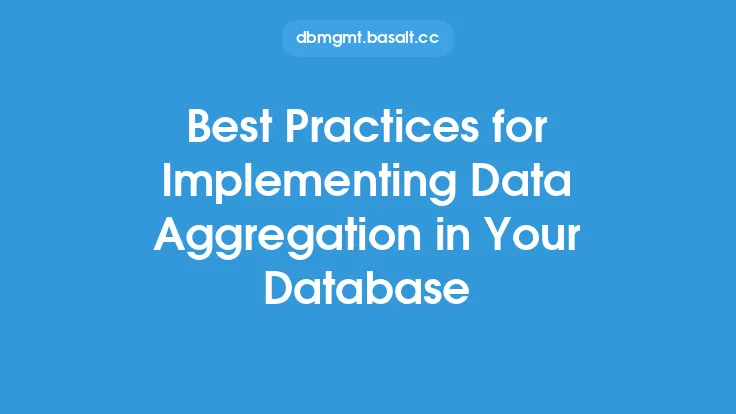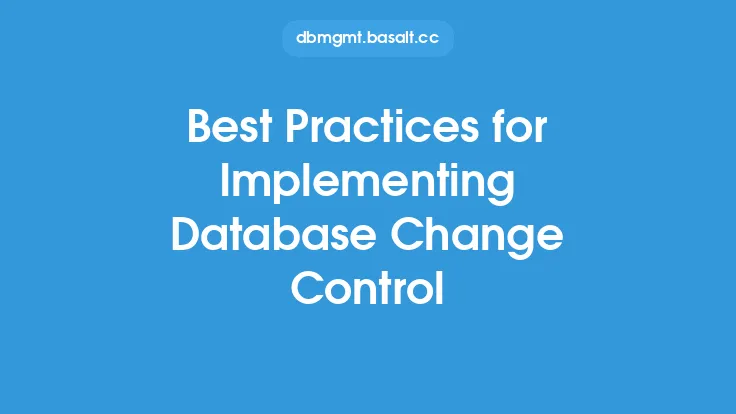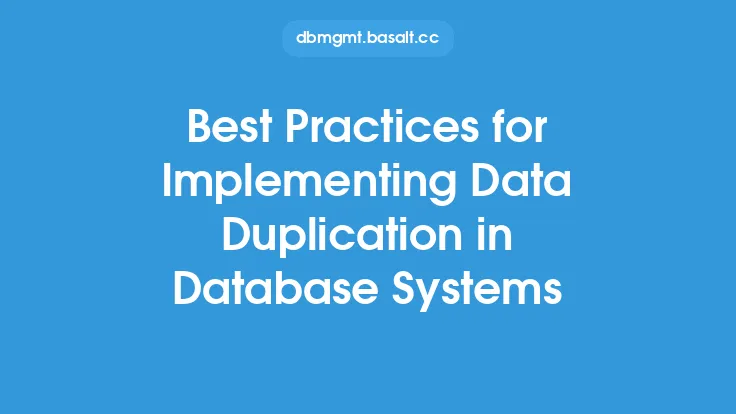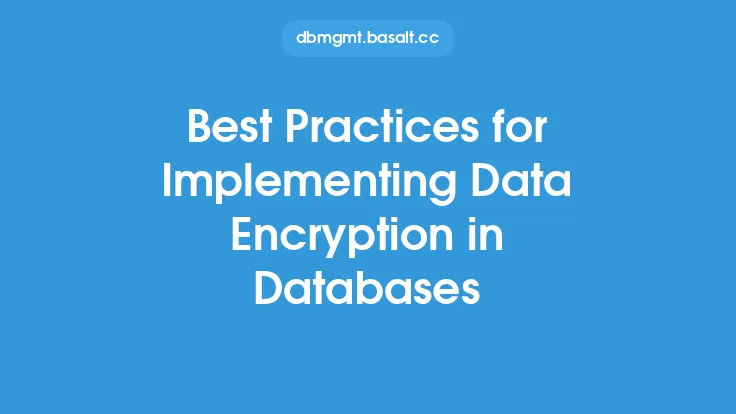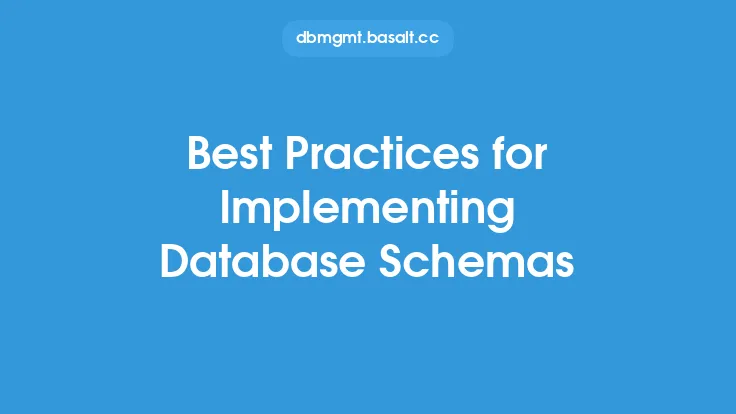Implementing database auditing is a crucial aspect of database administration, as it provides a clear picture of all the activities happening within the database. This includes tracking changes to data, monitoring user activity, and detecting potential security threats. To ensure effective database auditing, it's essential to follow best practices that cover various aspects, from planning and configuration to monitoring and analysis.
Planning and Configuration
Before implementing database auditing, it's crucial to plan and configure the auditing process carefully. This involves identifying the types of activities to be audited, such as data modifications, user logins, or system changes. It's also essential to determine the level of auditing required, which can range from basic logging to detailed tracking of all database activities. Additionally, the auditing process should be configured to capture relevant information, such as user IDs, timestamps, and affected data. This planning phase helps ensure that the auditing process is tailored to the specific needs of the organization and provides valuable insights into database activities.
Auditing Types and Levels
There are several types of database auditing, including system-level auditing, object-level auditing, and statement-level auditing. System-level auditing tracks system-wide activities, such as user logins and logouts, while object-level auditing monitors changes to specific database objects, such as tables or views. Statement-level auditing, on the other hand, tracks individual SQL statements executed against the database. The level of auditing can also vary, ranging from basic auditing, which captures only essential information, to detailed auditing, which provides a comprehensive record of all database activities. Understanding the different types and levels of auditing helps database administrators choose the most suitable approach for their organization's needs.
Data Storage and Management
Auditing generates a significant amount of data, which requires careful storage and management. The audit data should be stored in a secure and centralized location, such as a dedicated audit database or a security information and event management (SIEM) system. This ensures that the audit data is protected from unauthorized access and tampering. Additionally, the audit data should be managed effectively, with regular backups, archiving, and purging of unnecessary data. This helps maintain the integrity and availability of the audit data, making it easier to analyze and investigate security incidents.
Monitoring and Analysis
Effective database auditing requires continuous monitoring and analysis of audit data. This involves using specialized tools and techniques to identify potential security threats, detect anomalies, and track changes to database activities. The monitoring process should be automated, with alerts and notifications triggered by suspicious activities or predefined thresholds. The analysis phase involves examining the audit data to identify trends, patterns, and correlations, which can help database administrators understand the context and impact of database activities. This ongoing monitoring and analysis enable proactive measures to prevent security breaches and ensure the integrity of the database.
Security and Compliance
Database auditing plays a critical role in ensuring security and compliance with regulatory requirements. The auditing process helps detect potential security threats, such as unauthorized access or data breaches, and provides evidence of compliance with regulations, such as GDPR, HIPAA, or PCI-DSS. The audit data can be used to demonstrate compliance with regulatory requirements, reducing the risk of non-compliance and associated penalties. Additionally, the auditing process helps identify vulnerabilities and weaknesses in the database, enabling database administrators to take corrective measures to strengthen security and prevent potential breaches.
Performance and Optimization
Database auditing can impact database performance, particularly if the auditing process is not optimized. To minimize the performance impact, it's essential to optimize the auditing process, using techniques such as auditing only relevant activities, using efficient auditing mechanisms, and minimizing the amount of audit data generated. Additionally, the auditing process should be monitored regularly to identify performance bottlenecks and areas for optimization. This ensures that the auditing process is balanced with database performance, providing a secure and efficient database environment.
Best Practices and Recommendations
To ensure effective database auditing, several best practices and recommendations should be followed. These include:
- Implementing a centralized auditing system to simplify audit data management and analysis
- Using automated tools and techniques to monitor and analyze audit data
- Configuring auditing to capture relevant information, such as user IDs and timestamps
- Regularly reviewing and updating auditing policies and procedures
- Providing training and awareness programs for database administrators and users
- Continuously monitoring and optimizing the auditing process to minimize performance impact
By following these best practices and recommendations, organizations can ensure that their database auditing process is effective, efficient, and aligned with their security and compliance requirements.
Conclusion
Implementing database auditing is a critical aspect of database administration, providing a clear picture of database activities and helping detect potential security threats. By following best practices, understanding auditing types and levels, and optimizing the auditing process, organizations can ensure effective database auditing that balances security, compliance, and performance. As database environments continue to evolve, it's essential to stay informed about the latest auditing techniques, tools, and best practices to maintain a secure and efficient database environment.
